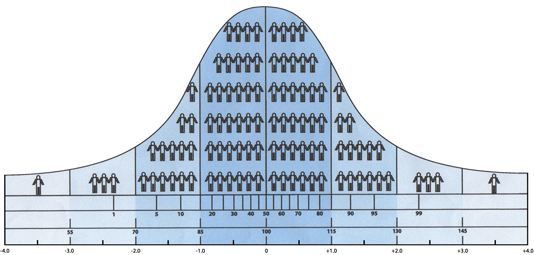
We have been exploring the topic of TRANSPHOBIA for nearly two months. If you are just now joining our blog, it is important for you to go back to the beginning of this series of blogs which began April 3, 2022, to set a proper foundation, and read each blog in sequence in order to understand what will be discussed in this blog, and to be able to put it into proper context. We will be continuing our look at the book, “The Riddle of Gender”. It is extremely difficult to try and summarize a 369-page book in one simple blog. If that were possible, the book would have only been five pages long. What we are attempting to do is lift quotations from that book to better help us understand The Truth about trans issues. The book contains seven personal accounts (not including the author’s) of individuals intimately involved in trans issues. We will learn from their knowledge and experience. Some of this will become a bit technical at times, so please read carefully and with purpose to fully understand what is being said.
“An enormous quantity of man-made chemicals has been released into the environment since the chemical revolution began after World War II. According to researchers who have studied their effects, ‘many of these chemicals can disturb development of the endocrine system and of the organs that respond to endocrine signals in organisms indirectly exposed during prenatal and /or early postnatal life; effects of exposure during development are permanent and irreversible.’ Some scientists and transpeople argue that the buildup of these endocrine-disrupting chemicals in the environment has begun to produce the same kind of effects on human sexual differentiation that have already been observed in wildlife and laboratory animals. In this view, a previously rare collection of endocrine-mediated anomalies is becoming more common as a result of the bioaccumulation of these chemicals, many of which are stored in fat and transmitted to the developing fetus through the placenta in pregnancy.” “The strongest evidence for a possible biological basis for gender variance comes from research on the effects of the drug diethylstilbestrol (DES). DES is a synthetic estrogen developed in 1938. Between 1945 and 1970, DES and other synthetic hormones were prescribed to millions of pregnant women in the mistaken belief that they would help prevent miscarriages. DES was even included in vitamins given to pregnant women, and in animal feed. Use of DES during pregnancy was discontinued in the United States in 1971, when seven young women whose mothers had taken DES during pregnancy were found to be suffering from a rare vaginal cancer. Since then, research on animals and human epidemiological studies have proved that DES causes myriad health problems in both males and females exposed to the drug in the womb, including structural damage to the reproductive system. Animal research has also shown that DES and other estrogenic chemicals affect the development of sex-dimorphic brain structures and behavior in animals. Laboratory animals exposed to hormones at critical stages of development in utero exhibited behaviors associated with the other sex after birth. Only in recent years have some researchers begun to note higher-than-expected rates of transgenderism in DES sons and daughters. The moderators of an online discussion group for the XY children of DES mothers surveyed subscribers in 2002 and discovered that 36.5 percent of the forum’s members were either preoperative or postoperative transsexuals, while another 14.3 percent defined themselves as transgendered. An update taken on the five-year anniversary of the group showed that since 1999, between one-quarter and one-third of the members of the DES Sons Network had indicated that gender identity and/or sexuality issues were among their most significant concerns. These data have not yet found their way into the scientific literature, however, and the combined cohort studies of DES children have thus far failed to ask a single question related to gender identity. This epidemiologic failure baffles DES ‘sons’ who are now daughters and who are aware of the increasing public health concerns about chemicals that bind to the estrogen receptor in humans and animals. ‘There are millions of us who were exposed to DES. And millions more exposed to DDT, DDE, dioxin, and God knows whatever else is out there that is estrogenic,’ says Dr. Dana Beyer, a transgendered physician who serves as co-moderator of the DES Sons Network. ‘You look at DES and say, ‘If that can mimic estrogen, there must be other things out there. What are people eating? What are they exposed to in the water supply? Five million people were exposed to DES in this country alone. Globally, there are many millions more. And we’re still alive and kicking and suffering from the effects. Plus there probably will be third-generation effects and maybe fourth- and fifth-generation effects.’ Efforts to establish the etiology, or cause, of transsexuality and other forms of gender variance have most often focused on psychological rather than organic causes – this is not surprising, since gender identity disorders are classified as psychiatric, not medical, conditions. Many psychiatrists have attempted to root gender nonconformity in an unstable home environment, abusive or disturbed parents, gender confusion in the family, and other social factors. This line of research has not been very successful, however, as relatively few individuals who grow up in disturbed circumstances of any kind exhibit gender anomalies. As early as 1973, a psychologist working with cross-gendered clients noted that ‘there is no more psychopathology in the transsexual population than in the population at large, although societal response to the transsexual does impose almost insurmountable problems’.” “Some who believe that transgenderism and transsexuality are biologically based argue that the condition known as ‘gender identity disorder’ ought to be removed from the DSM [Diagnostic and Statistical Manual of Mental Disorders] and reclassified as a congenital endocrinological disorder. ‘Somewhere the hormones that are secreted either by the brain or by the testes in response to the brain – the fetal hormonal system – are messed up. The end result is the morphological phenomenon, the brain anatomy or hypothalamic anatomy,’ says Dr. Dana Beyer. ‘Let’s figure out what’s going on here, rather than telling the parents the kid is crazy, delusional. The assumption is that you are psychotic or have some kind of mental abnormality. That’s the problem with the DSM. If we can make this a congenital anomaly just like cleft palate and cleft lip, or any of the physical intersex conditions, that shifts everybody’s perspective’.” “There needs to be an interdisciplinary gender studies. Because, so far, all of the theory and the research has come from a body of knowledge that has never had to be critical of its own foundational assumptions. And so it just becomes another vector for naturalizing particular kinds of ideological agendas. So I think that critically conscious transsexual or transgendered people, who can reveal the ideological constructions of the sex/gender systems, have this tremendous work in front of us. Unfortunately, it’s really hard to get funding to do that work.” George Jorgensen, Jr. “. . . turned for comfort to Paul de Kruif’s book, the Male Hormone, which points out that the chemical difference between testosterone and estradiol is merely a matter of four atoms of hydrogen and one atom of carbon. ‘If Dr. de Kruit’s chemical ratio was correct, it would seem then that the relationship was very close,’ Jorgensen writes in her autobiography. ‘That being so, I reasoned, there must be times when one could be so close to that physical dividing line that it would be difficult to determine on which side of the male-female dividing line one belonged’.” “. . . scientists learned that women’s urine contained the ‘male’ hormone, testosterone, and the urine of men contained the ‘female’ hormone, estrogen. Though the proportions were different, both sexes produced both male and female hormones. One researcher commented on the baffling discovery by noting that ‘the present wonder is not that intersexual conditions occur, but that the balance of endocrine factors usually comes down on one side or the other to produce a recognizable male or female – perhaps in these days, I should say, a more or less recognizable male or female’.” ” . . . research that might have made the study of gender variance something more substantial than an ‘ideology’ came to an abrupt end when the Johns Hopkins clinic closed in 1997 and most of the other university clinics followed suit.” “‘One of the things that I think was so tragic about SRS [Sex Reassignment Surgery] being forced off of medical school campuses is that it meant that almost all good research came to an abrupt end. That to me is a tragedy because there’s just so much research crying out to be done’, says Ben Barres of Stanford.” “Hormones acting under the influence of genes are now thought to be the primary architects of gender identity . . .” “. . . the exact mechanisms by which a core gender identity (or sexual orientation) is developed remain unclear.” “The truth is . . . ‘we don’t know where to look. It might be in the biochemistry. It might be somewhere else.’ [Milton] Diamond thinks that the seat of gender identity will eventually be located in the brain, ‘but it doesn’t have to be something that’s morphologically obvious’.“
“The pressure to conform to societal expectations of ‘normal’ behavior and appearance comes from all sides – parents, school authorities, the media, and (most daunting for an adolescent) peers. Though there are no Robert’s Rules of gender posted at home, in schools, and in churches, the rules exist and are often harshly enforced by peers, parents, and school authorities.” ” . . . rather than ‘generating research’ or research funding, the classification of GID [Gender Identity Disorder] as a mental disorder seems instead to have limited the research done on physiological mechanisms for gender variance, or on the intriguing connections between GID and prenatal exposure to DES and other exogenous estrogens and androgens.” “This lack of research has very large consequences for the transgender community, even beyond the basic but somewhat esoteric question of the etiology (cause) of gender variance.” “As even this brief treatment of the issue shows, questions far outnumber answers in the realm of transgender health care and research. In no area is this more true than in the biggest and most controversial question of all – what causes gender variance and why do there seem to be so many more gender-variant people in the world today than there were fifty years ago?”
Question: “Well, they put DES in pregnancy vitamins . . . I know. That’s one of the issues we have to deal with now, when we ask people, ‘Did your mother take DES?’ and they ask their mothers and they say, ‘No, they just gave me lots of vitamins.’ But that’s what they called them; that’s how they marketed them to women. ‘Oh, these are just vitamins.’ Some of them were more honest in saying, ‘This is to prevent miscarriage.’ But some women were given DES who hadn’t even miscarried, in vitamins and so forth.” “Developments in the last decade have highlighted the reproductive, behavioral, and anatomical effects of endocrine disrupters on animals exposed to these chemicals. Effects due to endocrine-disrupting chemicals are observed at concentrations as low as parts per trillion for animals in the laboratory, indicating that the fetal endocrine system is more sensitive to disruption than any other know body system. These results of toxicology are significantly related to the field of gender identity and indicate a causal relationship between exposure to these chemicals and anomalies in the expression of gender identity and other disorders such as reproductive failure. CHRISTINE JOHNSON, ‘ENDOCRINE DISRUPTING CHEMICALS AND TRANSSEXUALISM’ SEATTLE, 2001.” [When] “. . . I encountered Christine Johnson’s article sketching out a hypothesis between endocrine disrupters and transsexuality, I was two years into the research for this book. I had spoken to literally hundreds of transgendered and transsexual people at meetings and online. By then, it was abundantly clear to me that the people I was meeting were not mentally ill.” [When] “. . . I encountered Christine Johnson and discovered that there was, in fact, a substantial scientific literature on anomalous sexual differentiation, but that I wouldn’t find it in journals of endocrinology or psychiatry. I would find the hard science in the last places I would have thought to look: toxicology and environmental health, the disciplines in which I had been trained as a science writer.” “Regarding the environmental endocrine hypothesis itself and its relationship to transsexuality, Johnson points out that the scientific literature ‘makes it abundantly clear that it is possible to feminize males and masculinize females by application of exogenous hormones. This is reproduced reliably in the lab on animals, so there should be little argument over the potential of hormonal compounds to alter the ‘normal’ path of development. For the last 40 years, gender researchers have been saying that hormonal variations can indeed cause altered development of the anatomy of the genitals and the brain. And so now we find endocrine disrupters all over the place, and yet we still take the incredibly naive view that somehow we develop independently from our hormonal environment? I find this view totally inconsistent with my understanding of how natural systems work.” “Dr. John McLachlan, the Tulane University researcher . . . has been studying the effects of endocrine-disrupting chemicals for over thirty years. I approached him after his presentation at the February 2002 meeting and asked him, with some trepidation, if it was possible for endocrine-disrupting chemicals to affect human gender identity and sexual orientation, and to increase the prevalence of intersex conditions. ‘Absolutely,’ he replied . . .” “‘You should have a look at the DES literature’, he said. Soon after the meeting, I did so. what I discovered astonished me.”
“DES was first synthesized in 1938, in the laboratory of Sir Charles Dodds, a professor of biochemistry at the Middlesex Hospital Medical School at the University of London.” “. . . Dodd’s discovery of a synthetic estrogen that could be easily and cheaply produced was hailed as a great boon.” “. . . DES, manufactured from coal tar products, is not at all chemically similar in structure to natural estrogens.” The human body cannot utilize DES the same way that it does with estrogen, so some normal methods are not effective, and some abnormal methods must be employed. “Never patented, the drug was sold under more than 400 different brand names by 257 pharmaceutical companies in the United States alone.” DES was approved by the FDA in 1941 and prescribed to suppress lactation (for those women who did not choose to breastfeed), “to treat amenorrhea (failure to menstrate) and vaginitis and (surreptitiously) to prevent miscarriage . . .” Studies to confirm efficacy to prevent miscarriages were either flawed or showed no benefit in preventing miscarriages, but none the less, “more than three million pregnant women in the United States alone were prescribed DES between 1941 and 1971.” DES was included in pills, injections, vaginal suppositories, and vitamins and “became a routine part of the quality care that private practitioners gave their predominantly middle-class patients . . .” “Beginning in the early forties, DES was also used in commercial agriculture, added to the feed given to livestock and chickens in pellets – a practice given added impetus when, in 1947, researchers at the Purdue University Agriculture Station discovered that DES was a potent growth stimulant in cattle. In 1959 high levels of DES in meat were discovered to produce ‘disturbing symptoms’ in agricultural workers and consumers, including sterility, impotence, and gynecomastia (breast growth) in men.” DES was banned in chicken and lamb feed that same year, but not banned in cattle feed until 1971. How many people were exposed to DES between 1941 and 1971 is incalculable, as well as secondary exposures. Epigenetics studies how maternal nutrition can change gene function without altering DNA by inducing mutations. “Genes can be activated or inactivated by a process called methylation . . . which is critically important during prenatal and postnatal development, silencing some genes and activating others . . .” “‘Fleeting exposure to anything that influences methylation patterns during development can change the animal or person for a lifetime,’ the science writer Sandra Blakeslee reports . . .” “A fact sheet on DES produced by the National Toxicology Program notes transsexualism as one of many effects of DES, and the Dictionary of Organic Compounds, a standard reference book for organic chemists, notes that DES ’causes male impotence and transsexual changes particularly in offspring exposed in utero’.” “Prenatal exposure to DES primes an individual to be supersensitive to estrogens, whether endogenous (produced within the body) or exogenous (outside the body) for the remainder of his or her life.” “The DES Cancer Network estimates that approximately ten million mothers and unborn children were exposed to DES from 1941 to 1971. A great many of these individuals, both mothers and children, have no idea that they were unwitting participants in the DES experiment.” Sounds familiar, doesn’t it? Anyone heard of the COVID-19 injections? If you don’t know about the adverse effects of those injections, then you need to go back and review a few of our prior blogs! “Even if they did not receive direct injections of DES, many of our mothers ate contaminated food before and during their pregnancies.”
Our next blog will conclude this series on TRANSPHOBIA and finalize our search for The Truth by more comments on DES, along with other summarizing facts, from the book we have been reviewing, “The Riddle of Gender”. We again implore the reader to use your FREEDOM and LIBERTY to review and ponder upon the vast amount of material we have presented over the last several weeks. Remember, unity in our Nation does not require uniformity. We should only choose conversation over confrontation in our great Nation, as we seek transparency and truth.





